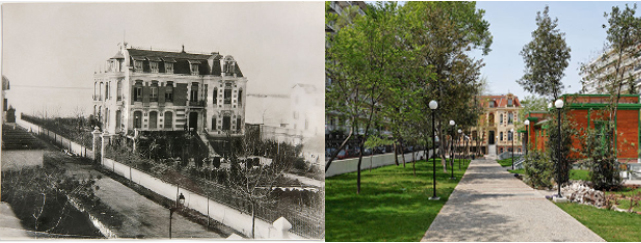
The foundation of the F.E.M.M.-Th. was the work of the Macedonian Charitable Brotherhood (Constantinople 1871 - Thessaloniki 1924-) an association very actively involved in educational area.
In 1931 the Brotherhood, under its President, Ioannis Taris (1885-1968), extended its field of interest by starting a collection of folklore material from the region of northern Greece. In the decades which followed the industry of the members of the Brotherhood resulted in the collection of a large number of remarkable artifacts, illustrating the life of the rural communities of Macedonia.
In 1957 the Folklore Museum of Northern Greece was established as a legal entity in private law, housed in a five-room apartment at 55 Nikis Avenue. In 1958 Ioannis Taris was succeeded by Konstantinos Kefalas , (1898-1989), who continued enthusiastically to enrich, document and exhibit the original collection.
In 1970, by virtue of legislative decree 406/70 and following pressure from the Brotherhood on the competent state agencies to find a permanent and suitable home for the collection, in combination with the conviction of the need for a folklore museum in northern Greece, the Folklife and Ethnological Museum of Macedonia was founded as a legal entity in public law, based in Thessaloniki; the new Museum was granted use of the building at 68 Vasilisis Olgas St., known as the «Old Governor's Residence». . The items gathered by the Brotherhood were to form the nucleus of the new Museum's collections.
In 1971 the Museum was brought under the supervision of the newly established Ministry of Culture. After work to adapt the building to its new role, the Folklife and Ethnological Museum of Macedonia opened its doors to the public on 18.2.1973. In 1980 the Museum was modernized and reorganized to meet contemporary ideas of museum management, and re-opened to visitors on 10-4-1981.
In 1986 the supervision of the Museum was transferred from the Ministry of Culture to the Ministry of Macedonia-Thrace. In 1993, by virtue of presidential decree 346, the Museum was renamed as the Folklife and Ethnological Museum of Macedonia-Thrace; its remit was now extended to cover the region of Thrace. In 1995 its collections were temporarily closed to the public while extensive conservation and remodelling work took place. The restoration of the building was completed in 2000. In the following year the Ministry of Culture untertook again the control of the Museum.
In 2003 the Museum opened its doors to the public once again, ushering in a new era in the life of the organization, with a permanent exhibition on The Mills of Macedonia and Thrace. In 2005 a second permanent exhibition was opened, featuring Traditional Costumes of Macedonia and Thrace, 1860-1960. The other permanent exhibitions for the food and shelter are currently under preparation.


 Follow us
Follow us 



